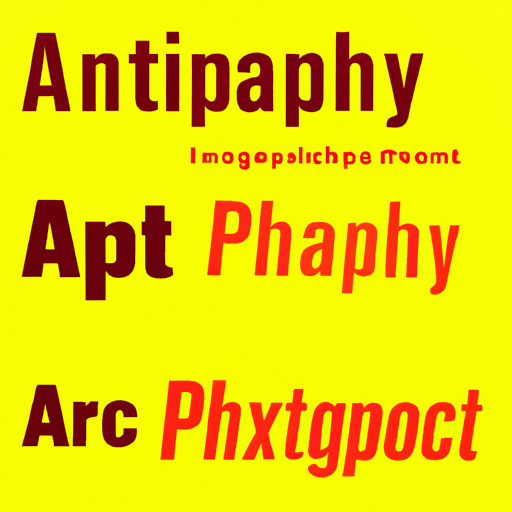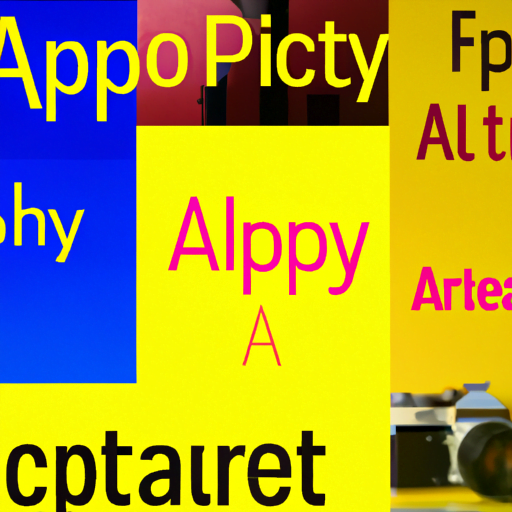
-
Table of Contents
The Art of Typography: Mixing Fonts and Styles for Impact

Typography is more than just selecting a font for your text. It is an art form that can greatly impact the overall design and message of a piece. When used effectively, mixing fonts and styles can create a visually appealing and engaging experience for the reader. In this article, we will explore the art of typography and how to effectively mix fonts and styles for maximum impact.
The Power of Typography
Typography plays a crucial role in communication. It can evoke emotions, convey information, and enhance the overall aesthetic appeal of a design. The right combination of fonts and styles can make a piece stand out and leave a lasting impression on the reader.
According to a study conducted by the Massachusetts Institute of Technology (MIT), typography significantly affects how people perceive and understand written information. The study found that the legibility and readability of text can influence comprehension and retention. Therefore, it is essential to carefully consider the typography choices when designing any form of communication.
The Importance of Font Selection
Fonts are the building blocks of typography. They come in various styles, weights, and sizes, each with its own unique characteristics. When selecting fonts, it is important to consider the purpose and tone of the design.
For example, if you are designing a formal invitation, a classic serif font like Times New Roman or Baskerville may be appropriate. On the other hand, if you are creating a modern and edgy poster, a sans-serif font like Helvetica or Futura may be more suitable.
It is also important to consider the readability of the font. Some fonts may look visually appealing but can be difficult to read in longer passages of text. Always test the legibility of a font at different sizes and weights to ensure it is suitable for the intended purpose.
The Art of Mixing Fonts
Mixing fonts can add depth and visual interest to a design. However, it is important to do so with intention and purpose. Here are some tips for effectively mixing fonts:
- Contrast: Choose fonts that have contrasting styles to create visual interest. For example, pairing a bold and heavy font with a light and delicate font can create a dynamic composition.
- Hierarchy: Use different fonts to establish a visual hierarchy and guide the reader’s attention. For instance, you can use a bold font for headings and a lighter font for body text.
- Consistency: While it is important to mix fonts, it is equally important to maintain consistency throughout the design. Stick to a limited number of fonts to avoid overwhelming the reader.
- Compatibility: Ensure that the fonts you choose work well together. Some fonts may clash or create visual discord when used together. Experiment with different combinations to find the right balance.
Case Studies: Successful Font Mixes
Let’s take a look at some real-world examples of successful font mixes:
1. Apple
Apple is known for its sleek and modern design aesthetic. They often mix fonts to create a sense of sophistication and elegance. For instance, they combine the sans-serif font San Francisco with the serif font Georgia to create a harmonious balance between modernity and tradition.
2. Vogue
Vogue, a renowned fashion magazine, uses font mixing to convey a sense of luxury and glamour. They often pair a bold and decorative font for the masthead with a clean and elegant font for the body text. This combination creates a visually striking and cohesive design.
3. Airbnb
Airbnb, a popular online marketplace for accommodations, uses font mixing to establish a friendly and approachable brand image. They combine a rounded sans-serif font for headings with a simple and legible font for body text. This combination creates a sense of warmth and accessibility.
The Role of Styles
In addition to mixing fonts, utilizing different styles within a font family can also enhance the visual impact of typography. Styles such as bold, italic, and underline can be used to emphasize certain words or phrases, create contrast, and guide the reader’s attention.
For example, using bold for headings and italic for quotes can help differentiate them from the rest of the text. Underlining key points can draw attention and make them more memorable.
Summary
Typography is a powerful tool that can greatly impact the effectiveness of a design. By carefully selecting and mixing fonts and styles, designers can create visually appealing and engaging compositions. Remember to consider the purpose and tone of the design, choose fonts that complement each other, and utilize styles to guide the reader’s attention. With the art of typography, you can elevate your designs and leave a lasting impression on your audience.
